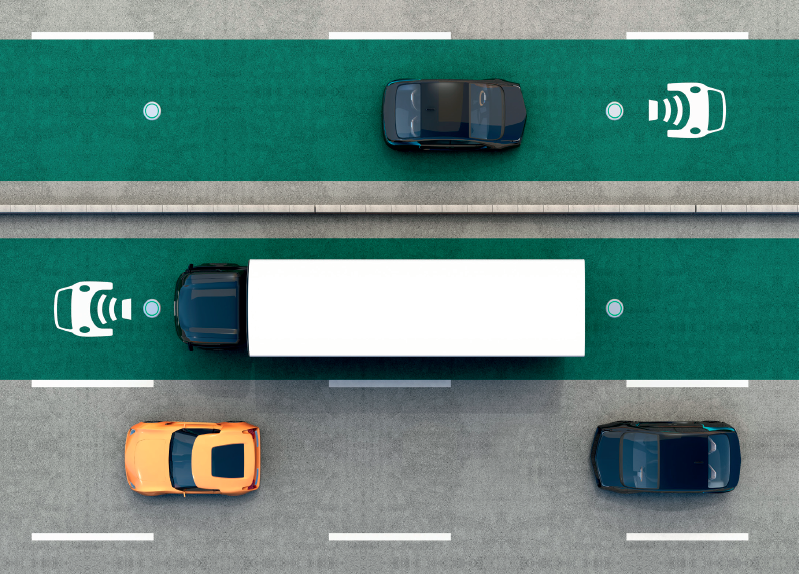
- Read the other articles from the All Electric series and find out about the rise of electric cars, what it’s like to own one, the benefits for businesses going EV and the hope of hydrogen here.
The growing scarcity of – and environmental problems with – fossil fuels is now well understood and there is a powerful and growing movement towards lower emission energy technology.
But it’s bigger than a simple shift from the combustion engine to electric. While the way people fuel their journey is set to change, just how we get from A to B is likely to represent an even more radical shift.
Currently occupying prime-position on the hype cycle are autonomous electric vehicles. While the idea of driverless tech may still feel like science fiction, it is, in fact, rapidly developing technology. Estimates vary between 2018 and 2030 as to when we’ll see fully autonomous cars, but the money is certainly flowing in that direction. Consultancy Frost & Sullivan estimates key automakers will spend US$345 billion on autonomous, connectivity and electrification R&D by 2025 and many mainstream car brands have recently acquired companies focused on self-driving technology.
While new car sales have been on the rise for a few years, individual car ownership has significant costs – the price of purchase, insurance, servicing, parking – and, with cars remaining unused for 95 percent of their life and parking taking up between 30 to 40 percent of urban space in big cities, autonomous advocates are quick to mention its inefficiency. Driverless on-demand options claim to eliminate these financial burdens and efficiency issues in one fell swoop.
“There are certainly key advantages with autonomous, on-demand transport,” says Chris Durno, corporate strategy manager for Z Energy. “There are economic advantages of course, but accessibility plays a big part too. You can call upon it when you need it, it’s cheaper and it’s safer too.”
And that shift may be closer than you think. After all, earlier this year Kiwi company Ohmio quietly announced a US$20 million investment deal to establish a manufacturing plant for autonomous vehicles in China. Those vehicles are doing the rounds at Christchurch airport as we speak (Zephyr Airworks, a subsidiary of Larry Page’s Kitty Hawk, is even testing a self-piloted air taxi called Cora in Christchurch, so roads may soon be obsolete).
But while change is inevitable, a radical shift in New Zealand transport is still going to take some effort. So what can we learn from overseas players who are leading the charge?
“If you look at countries that have done it really well you always come back to Norway,” says Andy Sinclair, General Manager of Hyundai New Zealand.
When you change to any new technology people generally stick with what they know. They need an incentive to change otherwise they’ll continue to do what they’ve always done. — Andy Sinclair, , General Manager, Hyundai New Zealand
Norway’s key advantage, he says, is its willingness to incentivise the shift from old-school, fossil fuel-based tech, to cleaner, greener solutions.
“With electric vehicles in particular, there are a lot of incentives in place – tax benefits, company tax benefits, toll exemptions, free parking for electric vehicles and priority bus lane usage for EV drivers.”
“When you change to any new technology people generally stick with what they know. They need an incentive to change otherwise they’ll continue to do what they’ve always done.”
New Zealand currently has around 9,000 electric vehicles on the road and the 2018 target of 8,000 set by the government was met in May. The Energy, Efficiency & Conservation Authority (EECA) has a goal of seeing 64,000 electric vehicles on our roads by 2021, but even with growing interest in the technology, a number of new models, better range and improving charging infrastructure, Sinclair says reaching that goal is not yet a certainty, especially without incentives.
“It’s not one step, it’s a lot of small steps,” says Sinclair. “Certainly if there was no fringe benefit tax that would help a lot of companies to go fully electric. If there was parking solely for electric vehicles – that’s always at a premium – that would encourage more electric vehicles into our cities.”
“There are lots of things we could be doing to encourage that growth. It’s just a case of actually doing it.”
For more information on electric vehicles visit hyundai.co.nz/electric-cars or call 0800 493 640.




